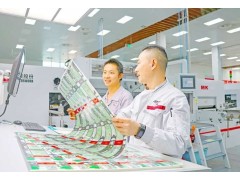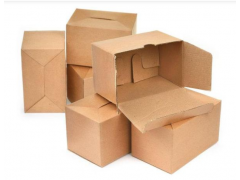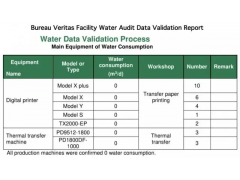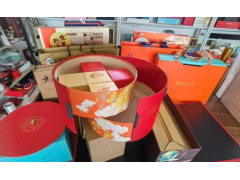Global oversupply has brought unprecedented challenges to the packaging market. In the past, the global paper and packaging industry has maintained a steady growth trend, with an annual increase of about 2.5% to 3.5%. However, in 2020, with the large-scale commissioning of new production capacity and the sharp drop in market demand, the industry landscape has changed significantly. The situation of overcapacity has led to a generally low global operating rate, and oversupply has become the main theme of the industry. Despite the many challenges, we remain cautiously optimistic about the future development of the industry.
Demand slowdown: Overinvestment in production capacity leads to global packaging oversupply
The global paper packaging industry is facing a serious overcapacity problem. Compared with the historical average operating rate, the global paper packaging capacity is oversupplied by nearly 11%, up to 40 million tons. In 2023, the global paper and paperboard production will be 409.7 million tons. This overcapacity is the main reason for the 3.1% decline in global paper and paperboard production in 2023.
The abnormally high demand during the epidemic once masked the problem of overcapacity, resulting in inventory backlogs. As the impact of the epidemic gradually subsided, destocking became the norm worldwide. Among them, the oversupply of containerboard was particularly serious, with excess capacity as high as 13%, accounting for 65% of the total oversupply. Despite this, containerboard is still the main force in the global packaging paper market, with its 188 million tons of production accounting for about half of the global total production.
We expect global demand for packaging paper to be lower than expected in the next few years. This trend is closely related to changes in consumer behavior. With the rise of emerging consumption patterns such as online shopping and takeout, new changes have emerged in consumer demand for packaging. In addition, people's choice of cheaper and more sustainable packaging has further suppressed the demand for packaging paper.
Overcapacity and changes in consumer behavior have led to an oversupply in the packaging paper market worldwide, especially in Asia and Europe. This supply-demand imbalance is expected to continue in the coming years, with the market remaining in a state of oversupply until at least 2027.
Production cuts: impact on various segments of the global packaging market in 2023
Containerboard is one of the paper products most affected by destocking. The main use of containerboard is high-end packaging, such as packaging for consumer electronics, cosmetics, perfumes and jewelry. As consumer behavior has not yet returned to pre-pandemic levels, these areas will perform poorly in 2023, directly leading to weak demand for containerboard.
During the 2021 pandemic, demand for containerboard surged, but then triggered a large-scale destocking. In contrast, kraft paper is widely used in construction and government projects and has performed relatively better. Although more and more companies plan to replace plastic packaging with fiber packaging to meet sustainable development needs, it remains to be seen whether actual demand can support this trend. Many companies were too optimistic about expanding fiber packaging capacity, and actual capacity did not meet expectations.
However, all is not hopeless for the paperboard industry. With the growing awareness of the sustainability of fiber-based packaging and the growing demand for convenience packaging in emerging markets, the demand for paperboard is expected to increase. However, the current high inflation also poses challenges to the paperboard industry. In response to inflation, many consumers turn to cheaper products, which are often packaged in plastic rather than fiber. As a result, some companies have begun to reduce their paperboard stocks.
Regional differences: Packaging challenges vary in Europe, Asia and North America
The paper packaging industry is facing the dilemma of low operating rates worldwide, especially in Europe and Asia. Since the outbreak of the COVID-19 pandemic in 2020, major companies have expanded their production capacity in response to the uncertain market situation. Although the closure of some factories in North America has offset this impact to a certain extent, the problem of overcapacity worldwide remains serious, reaching 40 million tons. Among them, the overcapacity in Asia is the most prominent, accounting for nearly 70% of the global overcapacity and about half of the global market. The weak demand in Asia and Europe, coupled with the substantial increase in production capacity, has made the oversupply in the market even more severe.
We expect that the paper packaging industry in Asia will continue to grow rapidly, with a growth rate expected to be twice that of Europe and North America. This depends largely on market demand in China. As an important consumer and exporter in the world, China has a profound impact on the economies of Europe, North America and even Latin America. With the upcoming introduction of European deforestation regulations, the cost of sustainable packaging will rise further. If European paper packaging companies want to remain competitive, they must adapt to the new regulatory environment and rising costs as soon as possible.
In the 1990s, global paper packaging production capacity was mainly concentrated in Europe and North America. However, today Asia's capacity has risen to about 50%. In contrast, North America's capacity expansion is more cautious. European companies need to take proactive measures to adapt to the changing market environment and increasingly stringent regulatory requirements.
Machine learning solutions continue to accelerate
Machine learning and algorithms are providing strong support for e-commerce packaging size optimization, thereby significantly reducing the consumption of containerboard and paperboard. In the past five years, these algorithms have helped us reduce the use of corrugated boxes by more than 35%. At the same time, some printing paper producers with poor performance have begun to turn their attention to packaging paper production and improve production efficiency by investing in technologies such as machine learning to optimize existing equipment.
Although the paper industry is already highly automated, there is still room for further improvement. For example, paper machines with a width of up to 8 meters can be automatically coded. In addition, artificial intelligence and machine learning technologies are being widely used to customize the design of packaging sizes to reduce overpackaging and waste. Looking ahead to the next 5-10 years, we expect the paper industry to usher in a new era of greater automation, with algorithms and robots playing an increasingly important role in the production process. As the level of automation continues to increase, companies may focus more on some more profitable market segments, such as specialty papers and industrial packaging.
Despite global economic uncertainty, new market opportunities grow
Mergers of global giants such as Smurfit Kappa and Westrock, International Paper and Desma may reduce the choices of paper buyers. Although these four companies only account for about 10% of the global market share, they may still have a certain impact on the market structure. The demand for packaging paper is largely affected by the demographic structure. Although the population growth in Europe is slowing down, its net exports of containerboard to the Middle East and Asia account for a high proportion, accounting for about 50% of Europe's total exports.
Most of Asia is still in a rapid development stage, and it is expected that by mid-2025, the growth of the Asian market will return to normal. However, the trend of slowing population growth in China may have a certain restraint on its economic growth. As the living standards of residents in emerging markets improve, the per capita consumption of packaging paper will also increase. The annual growth rate of mature markets is usually between 1% and 2%, while the annual growth rate of emerging markets can reach 3% to 4%.
Looking ahead, we expect that in 2025 and beyond, the annual growth rates of corrugated paper and containerboard will return to the historical levels of 3%-3.5% and 2.5%-3%, respectively. However, factors such as global economic uncertainty, rising energy prices, inflation, and geopolitical risks will still pose challenges to the development of the industry. Nevertheless, the slowdown in the average industry capacity growth rate will also create favorable conditions for market recovery in the next five years.







